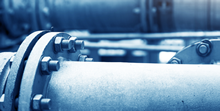Wastewater Infrastructure
Improving Water Quality
WEP’s sewer system collects and transports wastewater from homes, businesses, and industries to our treatment facilities, preventing untreated wastewater from entering natural water bodies, reducing contamination. The efficient transportation of wastewater is essential to avoid leaks and spills that could pollute the environment.
At the treatment plants, raw sewage goes through treatment processes that increase water quality. Primary treatment removes solid wastes and organic matter that could otherwise pollute water bodies, while secondary treatment removes excess oxygen (biochemical oxygen demand) that negatively impacts aquatic organisms. Tertiary treatment increases water quality by removing the remaining contaminants, including nitrogen, phosphorous, and pathogens.
Positively Impacting Onondaga Lake
Onondaga Lake is a testament to the positive impact of wastewater infrastructure on water quality. Onondaga Lake has undergone a significant transformation over the past few decades. Once known as one of the most polluted lakes in the United States due to industrial waste and sewage contamination, our lake has seen a remarkable recovery. Green and gray infrastructure improvements to the sewer system under WEP’s Save the Rain program along with advancements in the wastewater treatment process at the Metro Syracuse Plant contributed greatly to the Onondaga Lake cleanup.
Onondaga Lake Water Quality Data
Water quality data that is collected regularly from Onondaga Lake is available online in near real-time, as provided by the Upstate Freshwater Institute (UFI). View Onondaga Lake Water Quality Data.







